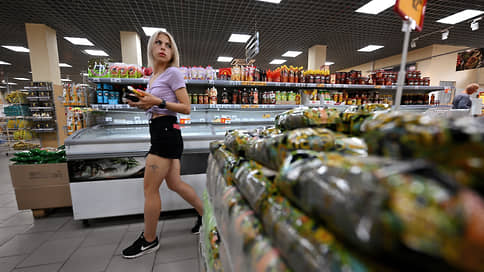Money cannot be kept in accounts – Newspaper Kommersant No. 154 (7355) dated 08/24/2022
[ad_1]

Analysts of the CMASF recorded the paradoxical nature of the consumer behavior of citizens in the second quarter of this year: along with the consumption rate, the rate of organized savings also grew. According to the results of the third quarter, when bank rates began to decline and a trend towards the weakening of the ruble emerged, the savings rate is likely to fall, which will further support consumption. The first signs of this appeared already in August. However, there is no talk of restoring demand yet, and the risks of a deterioration in the situation with employment and incomes of citizens have not disappeared already this autumn.
The new CMASF review noted, as they say, an “outwardly paradoxical effect” in the consumer behavior of citizens in the second quarter: both the consumption rate (a natural result of a jump in rush demand) and the rate of organized savings of citizens in deposits grew simultaneously. “The latter is the result of the population’s adaptation to new conditions: if in the first quarter the population “left” savings in favor of cash rubles and foreign currency, then in the second quarter, amid stabilization of the exchange rate and higher rates, it seems that they returned to traditional savings. In the third quarter, when rates began to fall and there was a tendency for the ruble to weaken, the savings rate is likely to fall, which will further support consumption,” the center’s analysts argue.
Operational data confirm these expectations. The Central Bank said that in July the volume of deposits grew at the lowest rate (1.5% per month) over the past three months. Mainly due to balances on current ruble accounts, the inflow of funds to ruble deposits was insignificant (0.2%), which is expected with a decrease in deposit rates, in early August the inflow of money from the population resumed. Against this backdrop, consumer unsecured credit increased by 0.7% in July against an increase of 0.2% in June. The number of new car loans increased by 12%, the volume of issuance – by 9%, according to OKB data. According to Sberindex (purchases with Sber cards), household spending on goods and services for the week from August 15 to 21 increased in nominal terms by 8% yoy against 6% and 5.8% in the previous two weeks. This data captures a noticeable jump in demand for non-food products in the third week of August due to spending on medicines, repairs, appliances, stationery, clothes and shoes, which is partly due to preparations for the new school year.
“Based on the dynamics of demand for all goods, we estimate the dynamics of retail trade in July at minus 8.5-9.5% yoy against minus 9.6% yoy in June and minus 10.1% in May. The August dynamics, taking into account the improvement over the last week, is likely to be slightly weaker than in July. At a qualitative level, since April, we would characterize the situation with consumer demand as falling and lying, ”analysts of the MMI Telegram channel fix. In July, the average check index, according to Romir, did not change (in fact, this has been happening for more than four months), which was not observed before. Over the year, the indicator grew by 8.7% – with inflation of about 15%, the real spending of Russians sank by 6-7%.
It should be noted that the growth of credit and a jump in the consumption of non-food products are observed against the backdrop of declining money incomes and record low unemployment. This is the result of the need for companies to save on labor costs with restrictions on the release of employees, the CMASF explains. All this is happening against the backdrop of an unusually large gap between expectations (they are already at an extremely high level, almost like in mid-2018, and are growing rapidly) and the assessment of the current state (on the contrary, it is at an unusually low level) that has been persisting for four months (since April). – worse than the pandemic in 2020, however, the figure has also been growing rapidly over the past two months). “This gap (crisis reverse of estimates) is a reflection of the onset crisis and, to a certain extent, its factor,” the center’s analysts explain.
A similar picture is captured by the data of a survey of citizens conducted in June by the Institute for Social Analysis and Forecasting of the RANEPA: only 4% of respondents faced a worsening situation in the labor market, in assessing the situation there is a slight increase in positive sentiment. Compared to March, the proportion of those who believe that they can easily find a similar job in case of dismissal has increased. Such overestimated optimism is one of the main reasons for the increase in demand for credit and the surge in consumption. However, the risks that in autumn the situation in the economy, as well as in the labor market, may worsen, remain.
[ad_2]
Source link






